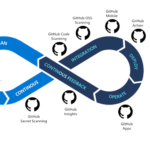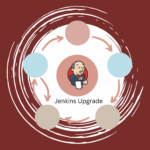Delivering quality software quickly and reliably is the ultimate goal. Continuous Integration and Continuous Delivery (CI/CD) pipelines have become essential to reach that goal. But designing a CI/CD pipeline that is efficient, scalable, and adaptable can be complex. Fortunately, tried-and-tested CI/CD pipeline design patterns provide a roadmap to architect robust delivery workflows that meet modern DevOps demands. In this blog, we will dive deep into 10 proven CI/CD pipeline design patterns that modern software teams trust, complete with real-world examples, practical guidelines, and future outlooks.
Understanding CI/CD Pipelines and Their Importance
CI/CD pipelines automate stages spanning building, testing, and deploying software changes, ensuring rapid and reliable delivery. Continuous Integration (CI) focuses on regularly merging code changes followed by automated builds and tests, while Continuous Delivery (CD) automates deployment to production or staging environments.
Designing a pipeline is more than stringing together tasks; it’s about creating a scalable, maintainable system that fosters collaboration, quality, and speed. The architecture of your pipeline enables these outcomes—making design patterns essential.
Key Concepts and Trends in CI/CD Pipeline Design
- Pipeline as Code: Defining pipeline configuration as version-controlled code to improve consistency and traceability.
- Microservices & Kubernetes: Orchestration and modular deployment driving pipeline complexity and flexibility.
- Shift-Left Testing: Moving testing earlier in the pipeline to catch defects sooner.
- DevSecOps: Integrating security checks and compliance throughout the pipeline stages.
- Serverless & Cloud-Native: Pipelines leveraging cloud functions and managed services for scalability.
The 10 CI/CD Pipeline Design Patterns That Deliver
1. Build and Deploy Model
This classic pattern separates build and deployment steps. The build stage packages the artifact once, which is then deployed repeatedly to multiple environments (dev, staging, prod). It's environment-agnostic and useful when consistent artifact reuse is essential.
Example: A large enterprise builds a microservice container image once and deploys the same image across test, QA, and production clusters for consistency.
2. Pipeline as Code
Here, pipelines are defined declaratively in files stored alongside your source code (e.g., YAML). This enables pipeline versioning, peer reviews, and reuse. Containerized runners often execute pipeline jobs providing isolated and consistent environments.
3. Trunk-Based Continuous Integration
Developers frequently merge small code changes (often multiple times daily) into a single mainline branch, triggering automated builds and tests. This minimizes integration conflicts and accelerates feedback.
4. Blue-Green Deployment
Two identical production environments (blue and green) allow seamless production upgrades by switching traffic from the old (blue) to the new (green) environment with minimal downtime.
Challenge: Requires double the infrastructure, but ensures zero downtime and easy rollback.
5. Canary Deployment
The new version is rolled out to a small subset of users first to monitor performance and errors before full rollout. Automated rollout decisions can be part of the pipeline.
6. Feature Toggle / Flag Pipeline
Enables deploying code with disabled features controlled by toggles. The pipeline automates building, testing, and deploying code while toggles allow controlled feature releases.
7. GitOps Pipeline Pattern
An infrastructure and deployment management approach where Git repositories are the source of truth. Changes to Git trigger automated pipelines that reconcile the actual environment state with the desired state declared in Git.
8. Multi-Branch Pipeline
Each branch in the repository triggers its own pipeline instance. Useful for parallel feature development, pull request validation, and environment isolation.
9. Mono Repository Pipeline
Designed for large monorepos managing multiple projects within a single repository. Pipelines are optimized to build and test only changed modules, improving efficiency.
10. Serverless CI/CD Pipeline
Utilizes serverless services (like AWS Lambda or Azure Functions) for pipeline tasks such as running tests, deployments, and notifications. This approach scales on demand and reduces infrastructure overhead.
Latest Tools and Technologies Powering CI/CD Pipelines
- Jenkins X and Spinnaker: For Kubernetes-native CI/CD orchestration
- GitHub Actions and GitLab CI/CD: Integrated pipelines with extensive marketplace actions and auto-scaling runners
- ArgoCD: A popular GitOps continuous delivery tool
- Tekton Pipelines: Kubernetes-native open-source framework for creating CI/CD systems
- Terraform and Pulumi: Infrastructure as Code tools closely tied into pipelines for infrastructure provisioning
Common Challenges & Solutions in Pipeline Design
- Managing Complexity: Modularize pipelines using templates and reusable steps to avoid monolithic scripts.
- Scalability: Use containerized or serverless runners that auto-scale to handle load bursts.
- Security: Integrate secrets management, static code analysis, and vulnerability scanning directly into pipelines.
- Testing Overhead: Implement test impact analysis and parallelize tests to reduce runtime.
- Monitoring & Feedback: Employ logging, metrics, and alerting tools to gain visibility into pipeline health.
Practical Case Study: Netflix’s Microservice CI/CD Pipeline
Netflix employs a microservices architecture with hundreds of independent teams deploying daily. Their pipeline pattern includes trunk-based CI integrated with automated testing and deployment pipelines orchestrated via Spinnaker for blue-green and canary releases. This setup ensures resilience, fast feedback, and minimal downtimes.
Read more: Netflix Tech Blog on Spinnaker
The Future of CI/CD Pipeline Architectures
Emerging trends shaping the next wave of CI/CD include AI/ML-driven pipelines that self-optimize builds and tests, further integration of security (DevSecOps), and more serverless-native pipelines reducing operator overhead.
The rise of micro frontends, service mesh-aware pipelines, and event-driven deployment strategies will add even more sophistication and flexibility to pipeline design.
Conclusion
Designing an effective CI/CD pipeline is crucial to accelerate software delivery while maintaining high quality. The 10 design patterns highlighted here provide a proven foundation to build scalable, resilient pipelines tailored to your project needs. Embracing modern tools and addressing common challenges thoughtfully will future-proof your delivery workflow. Whether you’re transitioning to microservices, adopting GitOps, or exploring serverless pipelines, these patterns empower you to innovate with confidence.
Further Reading and References
- 7 Best CI/CD Pipeline Patterns - DZone
- CI/CD Pipeline Patterns and Strategies - Harness Blog
- 20+ Best CI/CD Tools for DevOps in 2025 - Spacelift
- Netflix Tech Blog: Spinnaker Continuous Delivery
- CI/CD Design Patterns - Packt Publishing
Call to Action
Ready to design a CI/CD pipeline tailored to your project’s unique needs? Connect with the experts at Stonetusker to accelerate your software delivery journey with confidence and cutting-edge architecture. Visit https://stonetusker.com/contact-us/ and start your transformation today.



